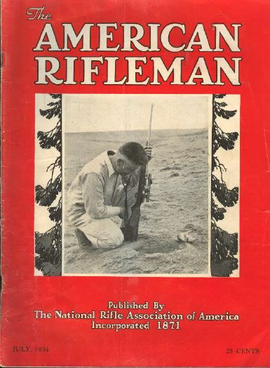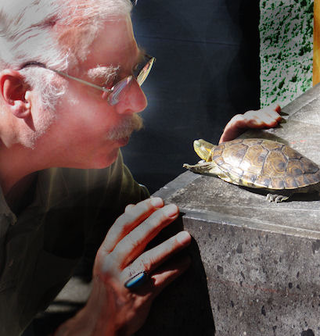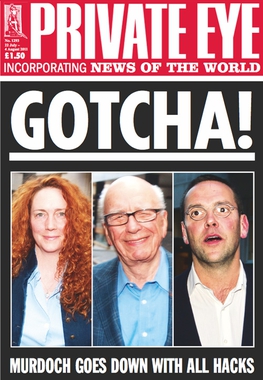Keynesian economics are the various macroeconomic theories and models of how aggregate demand strongly influences economic output and inflation. In the Keynesian view, aggregate demand does not necessarily equal the productive capacity of the economy. It is influenced by a host of factors that sometimes behave erratically and impact production, employment, and inflation.
Political science is the scientific study of politics. It is a social science dealing with systems of governance and power, and the analysis of political activities, political thought, political behavior, and associated constitutions and laws.

Samizdat was a form of dissident activity across the Eastern Bloc in which individuals reproduced censored and underground makeshift publications, often by hand, and passed the documents from reader to reader. The practice of manual reproduction was widespread, because typewriters and printing devices required official registration and permission to access. This was a grassroots practice used to evade official Soviet censorship.

Harvey Bernard Milk was an American politician and the first openly gay man to be elected to public office in California, as a member of the San Francisco Board of Supervisors. Milk was born and raised in New York, where he acknowledged his homosexuality as an adolescent, but chose to pursue sexual relationships with secrecy and discretion well into his adult years. His experience in the counterculture of the 1960s caused him to shed many of his conservative views about individual freedom and the expression of sexuality.

Hudson Institute is an American conservative think tank based in Washington, D.C. It was founded in 1961 in Croton-on-Hudson, New York, by futurist Herman Kahn and his colleagues at the RAND Corporation.

Presbyopia is physiological insufficiency of accommodation associated with the aging of the eye that results in progressively worsening ability to focus clearly on close objects. Also known as age-related farsightedness, it affects many adults over the age of 40. A common sign of presbyopia is difficulty reading small print which results in having to hold reading material farther away. Other symptoms associated can be headaches and eyestrain. Different people will have different degrees of problems. Other types of refractive errors may exist at the same time as presbyopia. This condition is similar to hypermetropia or far-sightedness which starts in childhood and exhibits similar symptoms of blur in the vision for close objects.
Extreme metal is a loosely defined umbrella term for a number of related heavy metal music subgenres that have developed since the early 1980s. It has been defined as a "cluster of metal subgenres characterized by sonic, verbal, and visual transgression".

Frederick Delano Newman was an American psychotherapist and left-wing political activist.

American Rifleman is a United States-based monthly shooting and firearms interest publication, owned by the National Rifle Association of America (NRA). It is the 33rd-most-widely-distributed consumer magazine and the NRA's primary magazine. The magazine has its headquarters in Fairfax, Virginia.
Soviet dissidents were people who disagreed with certain features of Soviet ideology or with its entirety and who were willing to speak out against them. The term dissident was used in the Soviet Union (USSR) in the period from the mid-1960s until the Fall of Communism. It was used to refer to small groups of marginalized intellectuals whose challenges, from modest to radical to the Soviet regime, met protection and encouragement from correspondents, and typically criminal prosecution or other forms of silencing by the authorities. Following the etymology of the term, a dissident is considered to "sit apart" from the regime. As dissenters began self-identifying as dissidents, the term came to refer to an individual whose non-conformism was perceived to be for the good of a society. The most influential subset of the dissidents is known as the Soviet human rights movement.

John Foster "Chip" Berlet is an American investigative journalist, research analyst, photojournalist, scholar, and activist specializing in the study of extreme right-wing movements in the United States. He also studies the spread of conspiracy theories. Since the 1995 Oklahoma City bombing, Berlet has regularly appeared in the media to discuss extremist news stories. He was a senior analyst at Political Research Associates (PRA), a non-profit group that tracks right-wing networks.

This bibliography of Chip Berlet contains a list of articles, books, book chapters, book reviews, presentations and reports by activist and author Chip Berlet as well as articles about him and his works.

Private Eye is a British fortnightly satirical and current affairs news magazine, founded in 1961. It is published in London and has been edited by Ian Hislop since 1986. The publication is widely recognised for its prominent criticism and lampooning of public figures. It is also known for its in-depth investigative journalism into under-reported scandals and cover-ups.
The CIA Kennedy assassination is a prominent John F. Kennedy assassination conspiracy theory. According to ABC News, the Central Intelligence Agency (CIA) is represented in nearly every theory that involves American conspirators. The secretive nature of the CIA, and the conjecture surrounding the high-profile political assassinations in the United States during the 1960s, has made the CIA a plausible suspect for some who believe in a conspiracy. Conspiracy theorists have ascribed various motives for CIA involvement in the assassination of President Kennedy, including Kennedy's firing of CIA director Allen Dulles, Kennedy's refusal to provide air support to the Bay of Pigs invasion, Kennedy's plan to cut the agency's budget by 20 percent, and the belief that the president was weak on communism.

Tom David Kahn was an American social democrat known for his leadership in several organizations. He was an activist and influential strategist in the Civil Rights Movement. He was a senior adviser and leader in the U.S. labor movement.
Keith Kahn-Harris is a sociologist and music critic. He is an honorary research fellow and senior lecturer at Birkbeck College and an associate fellow of the Institute for Jewish Policy Research and a lecturer at Leo Baeck College.
In cultural studies, media culture refers to the current Western capitalist society that emerged and developed from the 20th century, under the influence of mass media. The term alludes to the overall impact and intellectual guidance exerted by the media, not only on public opinion but also on tastes and values.
The Public Eye Network is a group of progressive investigative reporters, licensed investigators, paralegal investigators, attorneys, and activists who share information about political repression and right-wing movements that undermine civil liberties and civil rights. It was formed in the 1970s from three pre-existing groups, the editors of The Public Eye, the magazine sponsoring organization, the Repression Information Project (RIP), and the Guild Investigative Group. Several people who worked as editors or volunteer staff at CounterSpy Magazine joined the network.
Sabine C. Carey is a German political scientist.
Deborah Kahn is an American art historian, author, and academic, specializing in European Medieval art and architecture. She is an eminent figure in the study of Canterbury Cathedral collection. Kahn has acted as a consultant on sculpture and conservation to Canterbury Cathedral and Lincoln Cathedral. She became Visiting Assistant Professor, Department of Art History at Columbia University from 1986 to 1987. She went on to work at Princeton University, from 1989 to 1991; before joining Boston University in 1996, where she is currently Associate Professor, in the department of art history. She is the author of two books, as well as numerous articles and conference papers.









